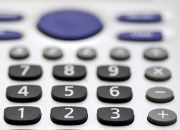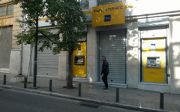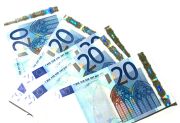Search
-
What the ECB's latest decision on ELA and collateral haircuts means for Greek banks
 Economy
Economya wide range of securities for ELA funding purposes. These mainly involve bank bonds issued with state
1% -
General gov't cash primary surplus to May halves, arrears keep rising
 EconomyMacroeconomy
EconomyMacroeconomyin arrears particularly since March mainly reflects the government’s decision to postpone or delay
1% -
Consumer prices drop further by 2.2 pct in June
 EconomyMacroeconomy
EconomyMacroeconomydue to an interim sales period in the first ten days of that month. This was mainly evident
1% -
Greece submits proposals to lenders in hope of paving way for agreement
 EconomyProgramme
EconomyProgrammethe latest institutions’ proposal mainly including · strong disincentives for early retirement
1% -
Newsletter 34 - 10/07/2015

this ten-day period. In contrast, sales of food products (mainly at supermarkets) and petrol stations
1% -
Greek banks in intensive care: What lies ahead?
 Agora
Agorabank failure cannot be avoided. The resolution tools mainly consist of powers to: 1) Effect private
1% -
Credit standards tougher in Q2, expected to tighten further
 EconomyMacroeconomy
EconomyMacroeconomybroadly stable. BoG started releasing the Greek quarterly BLS this year and mainly involves the four
1% -
Cash primary surplus reaches 1.3 bln at end of June on lower expenditure
 EconomyMacroeconomy
EconomyMacroeconomyhalf is higher by 518 million compared to the BoG primary cash surplus of 1.3 billion. This mainly
1% -
Unpaid taxes edge up by 656 mln in June for slowest monthly rise in 2015
 EconomyMacroeconomy
EconomyMacroeconomymillion. This means that this indicator is proportionally above target, mainly reflecting a strong
1% -
Disposable income up by 2.6 pct in Q1 for highest reading since 2009
 EconomyMacroeconomy
EconomyMacroeconomy. This corresponds to a decline by almost 22 percent since Q1 2009, mainly reflecting a sharp drop
1%